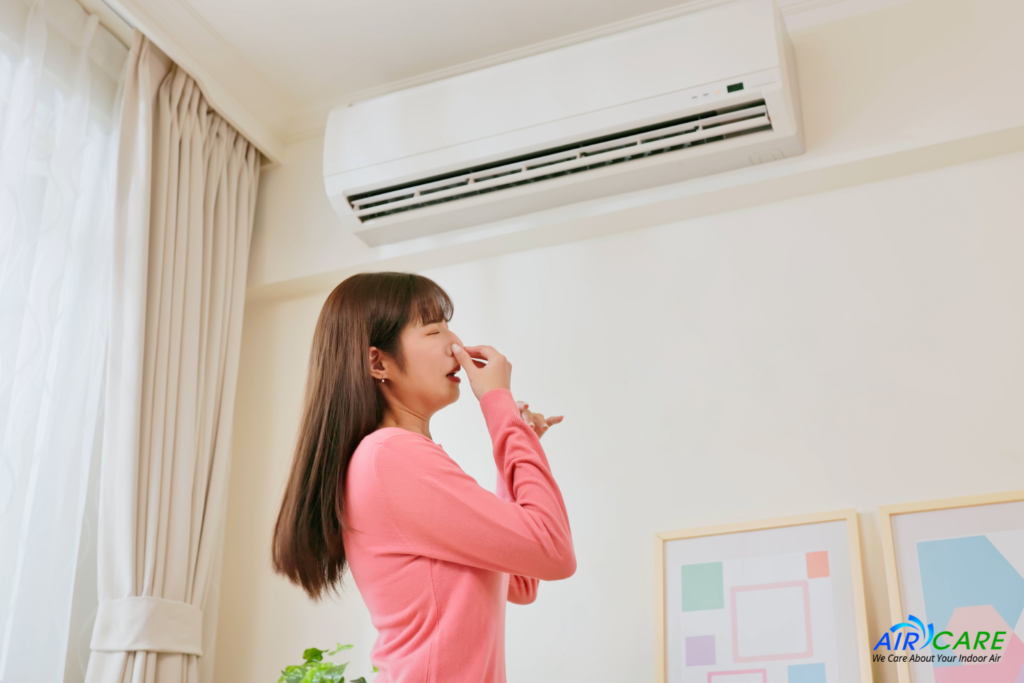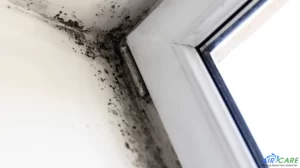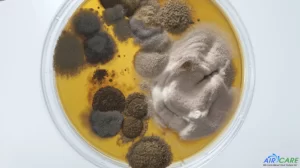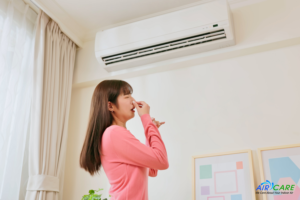The Top Signs of Mold in Your Air Ducts: Don’t Ignore the Warning Signs

Indoor air quality is a significant concern for homeowners, and one of the hidden culprits that can negatively impact it is mold in your air ducts. Mold is a type of fungus that thrives in damp and dark environments, making air ducts an ideal breeding ground. When mold spores are present in the air ducts, they can easily spread throughout your home, leading to a range of health issues and potential damage to your property.
Ignoring the warning signs of mold in your air ducts can have serious consequences, so it’s essential to be aware of the top signs indicating its presence.

Musty Odor: One of the most apparent signs of mold in your air ducts is a persistent musty or moldy odor throughout your home. Even if you clean and deodorize your living spaces regularly, the unpleasant smell may return due to the continuous circulation of mold spores through the ventilation system.
Allergic Reactions: Mold spores can trigger allergic reactions in sensitive individuals. If you or your family members experience unexplained sneezing, coughing, wheezing, itchy or watery eyes, or skin irritation, there may be mold in your air ducts.
Visible Mold Growth: In some cases, mold growth may be visible around the air vents or inside the ductwork. Mold can appear as black, green, or brown patches. However, keep in mind that not all mold is easily visible, and it may be present in hidden areas of the duct system.
Increased Humidity: Excessive moisture in your home can encourage mold growth. If you notice a rise in indoor humidity levels, it could be an indicator of moisture accumulation in the air ducts, creating an ideal environment for mold to thrive.
Water Damage or Leaks: Past or current water leaks in your home can contribute to mold growth in the air ducts. Check for any signs of water damage around the vents or any discoloration on the walls, ceiling, or flooring near the ductwork.
Respiratory Issues: Prolonged exposure to mold spores in the air can lead to more severe respiratory issues, especially in individuals with asthma, allergies, or other respiratory conditions. If you notice an increase in respiratory problems, mold in the air ducts could be a potential cause.
Reduced Airflow: Mold growth inside the air ducts can restrict airflow, making your HVAC system less efficient. If you notice a decrease in airflow or uneven heating and cooling in different rooms, mold may be obstructing the ducts.
HVAC System Issues: Mold can affect the performance of your heating, ventilation, and air conditioning (HVAC) system. If you notice your HVAC system is working harder than usual or experiencing more frequent breakdowns, mold could be a contributing factor.
What to Do If You Suspect Mold in Your Air Ducts
The frequency of dryer vent cleaning depends on various factors, including usage, the type of dryer, and the length of the venting system. Here are some expert recommendations:
Regular Visual Inspection: It’s a good practice to visually inspect your dryer vent at least once every six months. Check for any visible lint or debris build-up on the exterior vent cover and the surrounding area.
Clean the Lint Trap After Every Load: Cleaning the lint trap after each load is a simple yet effective way to reduce lint build-up in the vent system. This step alone can significantly improve the efficiency and safety of your dryer.
Annual Cleaning: In general, it’s recommended to have your dryer vent professionally cleaned at least once a year. This is especially crucial for households that use the dryer frequently or have larger families, as these factors contribute to faster lint accumulation.
Monitor Drying Times: If you notice that your dryer is taking longer than usual to dry clothes, it might be a sign of a clogged vent. In such cases, consider having the vent cleaned even if it hasn’t been a year since the last cleaning.
High-Efficiency Dryers: If you own a high-efficiency dryer, it may produce more lint, and the vent might require more frequent cleaning. Check the manufacturer’s guidelines for specific recommendations.
Consider Your Home’s Situation: Homes with long venting systems or those with vents that have several bends and turns may accumulate lint more rapidly. In such cases, more frequent cleaning might be necessary.
Conclusion
Mold in your air ducts is a serious issue that can negatively impact your health and the well-being of your home. By being attentive to the warning signs of mold growth in your air ducts, you can take timely action to address the problem and ensure a healthy living environment for you and your family. Regular HVAC system maintenance and professional mold remediation, if necessary, are essential steps to safeguard your home from mold-related issues and maintain optimal indoor air quality.
Get in touch
- (610) 890-6300
- info@aircareonline.com
- https://aircareonline.com
- 1510 Gary Street, Unit 1 Bethlehem, PA 18018
- Monday - Friday: 8:30 am - 4:30 pm Evenings and Saturdays: By appointment only









